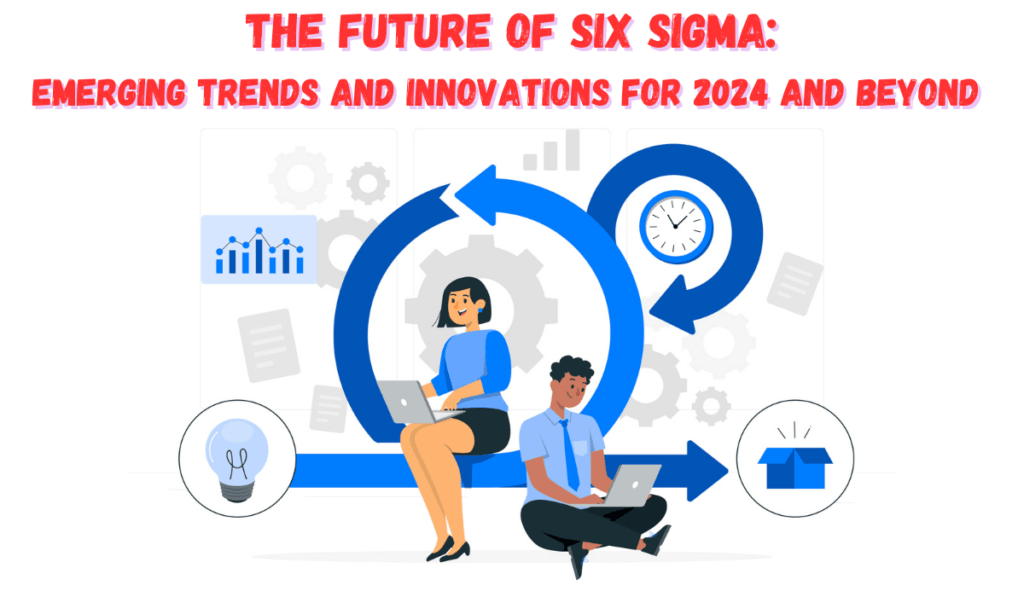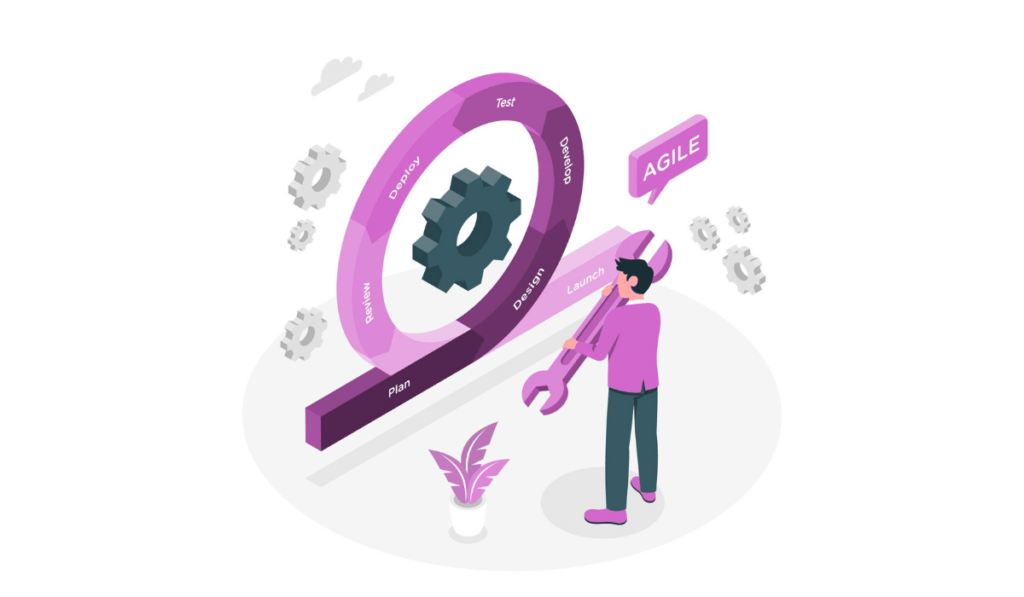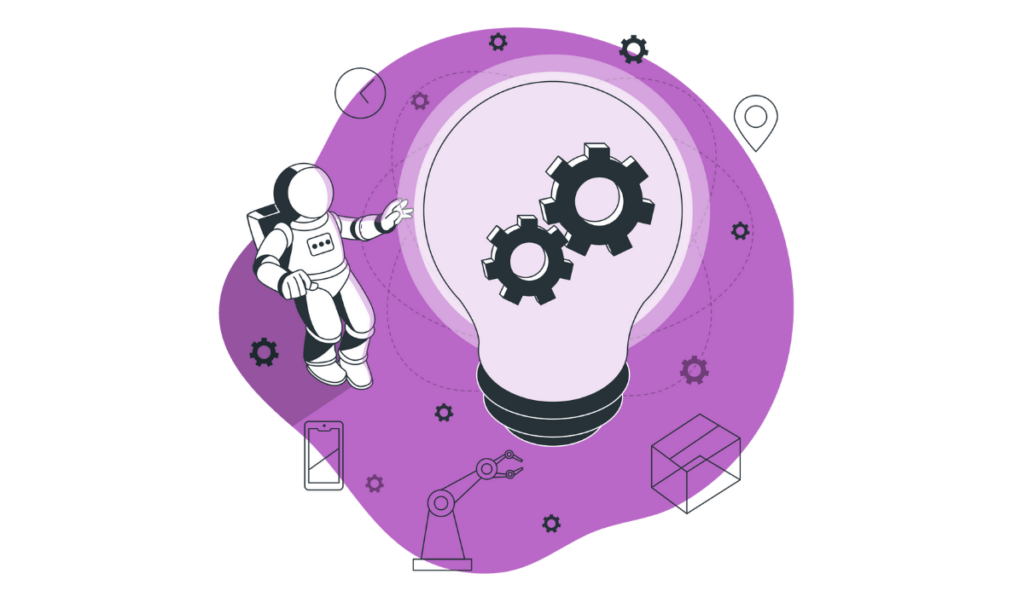
Six Sigma – one of the key processes in the center of process improvement strategies – has empowered businesses for decades. Born in the manufacturing halls of Motorola during the 1980s, it is a data-driven technique that lays the foundation for streamlining workflows, reducing defects, and increasing customer contentment across industries. But the business landscape is on the cusp of dramatic change. New technology and rapidly shifting customer needs, in the never-ending search for agility and innovation, are making Six Sigma remain adaptive. With 2024 and beyond starting to come into view, here’s an early look at some of the trends and innovations that hold the future for the year as exciting and engaging.
A Digital Revolution Takes Center Stage

The digital revolution is sweeping across industries, and Six Sigma is no exception. Organizations are increasingly embracing a digital arsenal to streamline process analysis and improvement. Cloud-based platforms enable real-time data collection and collaboration, while advanced analytics software unveils root causes of problems with unprecedented speed and accuracy.
Imagine a bustling manufacturing plant. Sensors embedded in machines whisper a story in real-time – data on performance, potential issues. This data streams seamlessly to a cloud platform, where Six Sigma practitioners can analyze it, identify trends, and predict potential defects before they materialize. This proactive approach translates to significant cost savings, reduced waste, and a smoother-running operation. A study by McKinsey & Company found that companies leveraging advanced analytics in their Six Sigma projects achieved a staggering 30% reduction in cycle times.
AI and Machine Learning Join the Six Sigma Team

Artificial intelligence (AI) and machine learning (ML) are no longer science fiction. These powerful technologies are rapidly becoming essential tools in the Six Sigma toolbox. AI automates repetitive tasks, freeing up human experts to focus on strategic work. Machine learning algorithms devour vast amounts of data, uncovering hidden patterns and predicting future problems with remarkable accuracy.
Consider a customer service department inundated with complaints. An AI-powered system could analyze these complaints, identifying common themes and frustrations. This information is then fed to a Six Sigma team, enabling them to pinpoint weaknesses in a product or service and implement targeted improvements. A 2022 analysis by Zscaler highlights that integrating AI into root cause analysis can accelerate problem resolution from hours to seconds, significantly improving operational efficiency.
Focus on Customer-Centricity: Putting the Customer at the Heart

While Six Sigma traditionally focused on internal process improvement, the future demands a customer-centric approach. In today’s competitive landscape, exceptional customer experiences are the lifeblood of sustainable success. Six Sigma is evolving to incorporate customer feedback and data into the improvement process.
Customer surveys, social media analysis, and journey mapping are becoming crucial tools in the Six Sigma arsenal. By understanding customer pain points, preferences, and behaviors, organizations can tailor their improvement efforts to address the issues that matter most to their target audience. For instance, a bank might leverage Six Sigma to analyze customer feedback on their online banking platform, identifying areas for improvement and ultimately delivering a more user-friendly and efficient experience.
Six Sigma Goes Beyond Manufacturing: A Universal Toolkit

Six Sigma may have originated in the manufacturing sector, but its principles are universally applicable to any business process. Service industries like healthcare, finance, and even government are embracing Six Sigma’s power to streamline operations, reduce costs, and enhance quality.
A hospital overwhelmed by long wait times can utilize Six Sigma to identify bottlenecks in its patient intake process. Six Sigma tools would help streamline patient registration, improve appointment scheduling, and optimize resource allocation, leading to shorter wait times and a more efficient healthcare delivery system.
Agile and Lean Six Sigma: A Powerful Collaboration

The Agile methodology, renowned for its flexibility and rapid iteration, is increasingly being combined with Six Sigma’s structured, data-driven framework. This hybrid approach, known as Agile Six Sigma, empowers businesses to achieve continuous improvement while maintaining agility in a fast-changing environment.
Imagine a software development team tackling a complex project. They leverage Agile for rapid prototyping and iteration, while simultaneously incorporating Six Sigma tools to identify and eliminate defects. This dynamic duo allows for faster development cycles, higher quality products, and a more efficient overall process. According to McKinsey’s 2022 report, organizations that effectively leverage AI within their process improvement frameworks experience higher efficiency and reduced operational times.
Sustainability Takes Priority: A Green and Responsible Approach

Environmental and social responsibility are no longer afterthoughts for businesses. Organizations are actively seeking ways to reduce their environmental impact and operate more sustainably. Six Sigma is being adapted to incorporate sustainability considerations into the improvement process.
A company could use Six Sigma to identify ways to minimize energy consumption in its manufacturing processes, reduce waste generation, or develop eco-friendly products. This approach not only benefits the environment, but can also lead to significant cost savings – a win-win for the environment and the bottom line. Six Sigma Daily reports how companies using Six Sigma for sustainability have significantly reduced costs and improved environmental outcomes. For instance, Lockheed Martin’s use of Six Sigma has led to a 20% reduction in operational costs and significant environmental benefits.
Developing Leaders and Transforming Culture: The Human Touch Endures

Six Sigma isn’t just about sophisticated tools and cutting-edge technologies; it’s about fostering a culture of continuous improvement. Organizations are recognizing the importance of developing strong leadership skills and nurturing a collaborative, innovation-driven environment among Six Sigma practitioners.
Investing in leadership training programs for Green Belts and Black Belts is becoming increasingly common. Creating cross-functional teams that bring together employees from diverse departments to tackle improvement projects is another key strategy. A strong emphasis on communication and knowledge sharing is crucial to ensure everyone is aligned and empowered to contribute to the improvement process.
Six Sigma for Startups and Small Businesses: A Scalable Approach

Six Sigma has traditionally been perceived as a methodology for large enterprises. However, the core principles of Six Sigma can be just as valuable for startups and small businesses. Streamlining processes, reducing waste, and improving efficiency are all crucial for these organizations to thrive in a competitive landscape.
Six Sigma training programs are becoming more affordable and accessible, making it easier for smaller businesses to get started. The key is to tailor the methodology to the specific needs of the organization and avoid overly complex implementations. Focusing on quick wins and demonstrating the value of Six Sigma early on will encourage broader adoption within the organization.
Continuous Learning is Key: Staying Ahead of the Curve

The business landscape is in a state of perpetual flux, and Six Sigma must evolve alongside it. Organizations need to cultivate a culture of continuous learning to ensure their Six Sigma practitioners are equipped with the latest tools and techniques.
Investing in ongoing training programs, attending industry conferences, and encouraging knowledge sharing among team members are all essential practices. By staying abreast of the latest developments, Six Sigma practitioners can ensure they are driving continuous improvement within their organizations.
The Human Touch Remains Essential: The Irreplaceable Power of People

While technology plays an increasingly important role in Six Sigma, the human element remains irreplaceable. Projects succeed because of the dedication and expertise of the people who implement this methodology.
Organizations need to invest in developing the skills and knowledge of their Six Sigma teams, and create an environment where employees feel empowered to identify problems and propose solutions. Strong communication, collaboration, and problem-solving skills are critical for success.
The Future is Bright for Six Sigma: A Journey of Continuous Improvement

Six Sigma has a proven track record of helping businesses improve efficiency, reduce costs, and achieve their strategic goals. As the world continues to evolve, the methodology is evolving with it. By embracing new technologies, focusing on customer-centricity, and fostering a culture of continuous improvement, it will continue to be a valuable tool for businesses of all sizes in the years to come.
Six Sigma is not a static methodology; it’s a living, breathing framework that adapts to meet the needs of the ever-changing business landscape. By staying ahead of the curve and embracing these emerging trends and innovations, organizations can leverage the power of Six Sigma to achieve operational excellence and secure a competitive advantage in the years to come. This journey of continuous improvement will not only benefit businesses, but will also contribute to a more efficient, sustainable, and customer-centric future.
Ready to take your career to the next level? Enroll in our Six Sigma certification program today and become a leader in process improvement! Start now and unlock your potential.

Excellent and informative article. Quite helpful for forward thinking LSS professionals to align their CPD trainings and other forms of professional growth with the estimated trajectory of LSS in Industry 4.0.